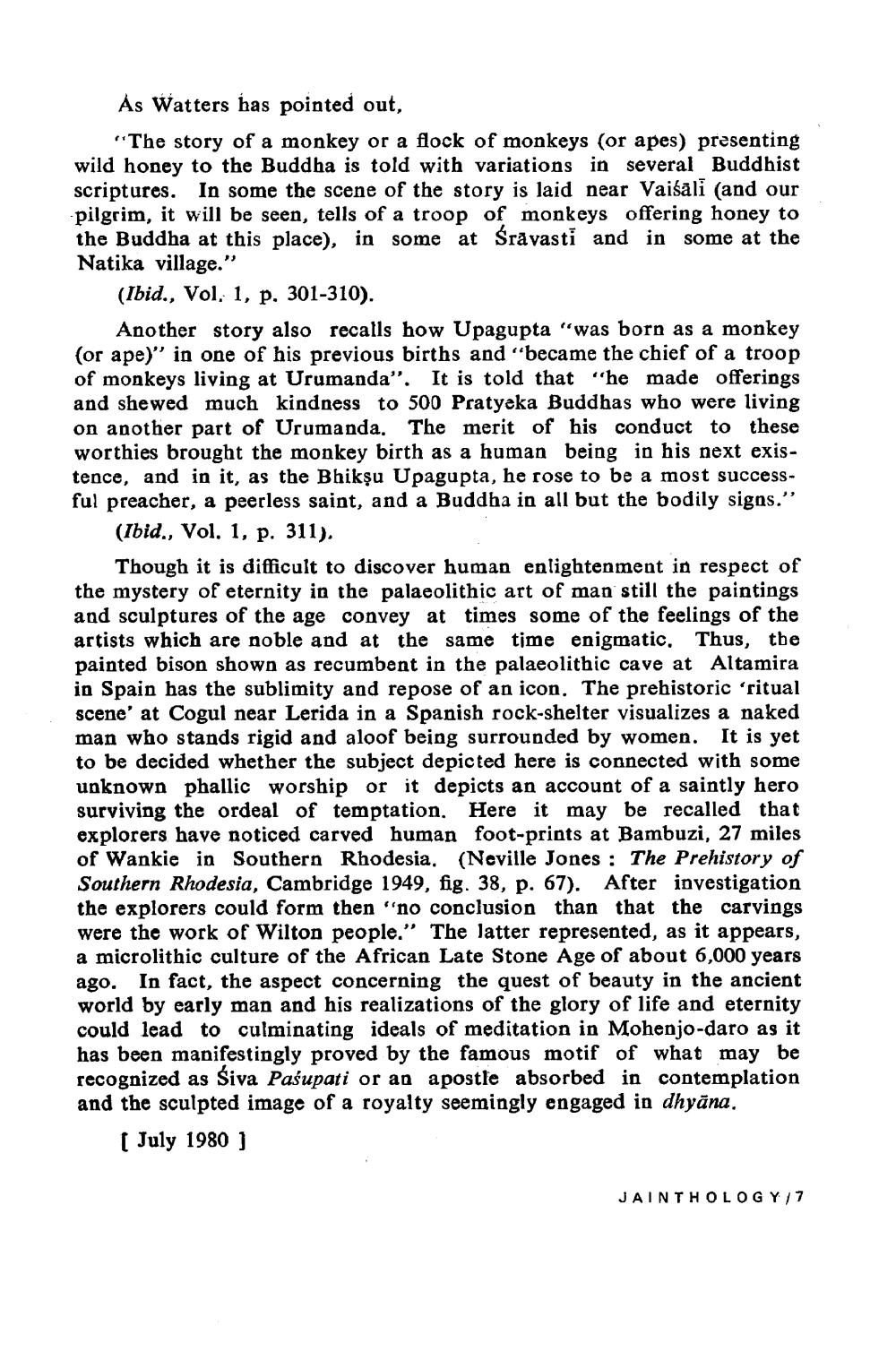________________
As Watters has pointed out,
"The story of a monkey or a flock of monkeys (or apes) presenting wild honey to the Buddha is told with variations in several Buddhist scriptures. In some the scene of the story is laid near Vaiśāli (and our pilgrim, it will be seen, tells of a troop of monkeys offering honey to the Buddha at this place), in some at Śravasti and in some at the Natika village."
(Ibid., Vol. 1, p. 301-310).
Another story also recalls how Upagupta "was born as a monkey (or ape)" in one of his previous births and "became the chief of a troop of monkeys living at Urumanda". It is told that "he made offerings and shewed much kindness to 500 Pratyeka Buddhas who were living on another part of Urumanda. The merit of his conduct to these worthies brought the monkey birth as a human being in his next existence, and in it, as the Bhiksu Upagupta, he rose to be a most successful preacher, a peerless saint, and a Buddha in all but the bodily signs."
(Ibid., Vol. 1, p. 311).
Though it is difficult to discover human enlightenment in respect of the mystery of eternity in the palaeolithic art of man still the paintings and sculptures of the age convey at times some of the feelings of the artists which are noble and at the same time enigmatic. Thus, the painted bison shown as recumbent in the palaeolithic cave at Altamira in Spain has the sublimity and repose of an icon. The prehistoric 'ritual scene' at Cogul near Lerida in a Spanish rock-shelter visualizes a naked man who stands rigid and aloof being surrounded by women. It is yet to be decided whether the subject depicted here is connected with some unknown phallic worship or it depicts an account of a saintly hero surviving the ordeal of temptation. Here it may be recalled that explorers have noticed carved human foot-prints at Bambuzi, 27 miles of Wankie in Southern Rhodesia. (Neville Jones: The Prehistory of Southern Rhodesia, Cambridge 1949, fig. 38, p. 67). After investigation the explorers could form then "no conclusion than that the carvings were the work of Wilton people." The latter represented, as it appears, a microlithic culture of the African Late Stone Age of about 6,000 years ago. In fact, the aspect concerning the quest of beauty in the ancient world by early man and his realizations of the glory of life and eternity could lead to culminating ideals of meditation in Mohenjo-daro as it has been manifestingly proved by the famous motif of what may be recognized as Śiva Pasupati or an apostle absorbed in contemplation and the sculpted image of a royalty seemingly engaged in dhyāna.
[ July 1980 ]
JAINTHOLOGY/7




